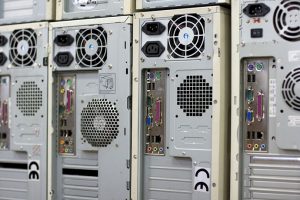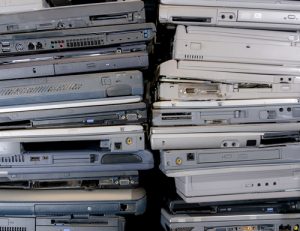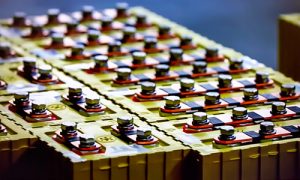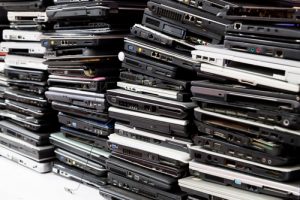 Draft legislation would make Massachusetts the 26th state with a regulated e-scrap program.
Draft legislation would make Massachusetts the 26th state with a regulated e-scrap program.

 Colin Staub was a reporter and associate editor at Resource Recycling until August 2025.
Colin Staub was a reporter and associate editor at Resource Recycling until August 2025. Draft legislation would make Massachusetts the 26th state with a regulated e-scrap program.
Draft legislation would make Massachusetts the 26th state with a regulated e-scrap program.
 The IT asset disposition sector is facing “unprecedented uncertainty,” according to an industry expert, yet it is receiving more and more interest from outside investors.
The IT asset disposition sector is facing “unprecedented uncertainty,” according to an industry expert, yet it is receiving more and more interest from outside investors.

Lawmakers hear testimony from Ned Eldridge of eLoop (left), Michele Nestor of Nestor Resources and Bob Bylone of the Pennsylvania Recycling Markets Center.
Manufacturers say proposed changes to Pennsylvania’s e-scrap program would make it the worst in the country from an OEM perspective. Proponents, however, note the bill fixes dire problems that have led to rampant CRT dumping statewide.
 Data detailing the global generation and flow of e-scrap is in draft form and will be published within the next couple months, according to the Bureau of International Recycling (BIR).
Data detailing the global generation and flow of e-scrap is in draft form and will be published within the next couple months, according to the Bureau of International Recycling (BIR).
 China’s early adoption of electric vehicle usage means the country is also getting an early look at the next big material in the waste stream: lithium-ion batteries.
China’s early adoption of electric vehicle usage means the country is also getting an early look at the next big material in the waste stream: lithium-ion batteries.
 Rhode Island’s e-scrap law received some updates this month, requiring certain manufacturers to join the state-run collection program while allowing more flexibility for OEMs running independent plans.
Rhode Island’s e-scrap law received some updates this month, requiring certain manufacturers to join the state-run collection program while allowing more flexibility for OEMs running independent plans.
 Environmental advocacy group Greenpeace has scored a handful of the top consumer electronics manufacturers on the recyclability of their devices, among other criteria. Although some companies stood out as positive examples, the report found there is much room for improvement.
Environmental advocacy group Greenpeace has scored a handful of the top consumer electronics manufacturers on the recyclability of their devices, among other criteria. Although some companies stood out as positive examples, the report found there is much room for improvement.
 Proposed legislation dramatically overhauls Pennsylvania’s e-scrap program, adding a point-of-sale fee on certain devices and making manufacturers financially responsible for end-of-life management of all devices collected under the law.
Proposed legislation dramatically overhauls Pennsylvania’s e-scrap program, adding a point-of-sale fee on certain devices and making manufacturers financially responsible for end-of-life management of all devices collected under the law.

Sarah Murray of the Wisconsin Department of Natural Resources speaks at E-Scrap 2017.
When it comes to CRT management, the profit is shaky and the industry is littered with horror stories of stockpiles and legal battles to determine who pays for cleanup.

Kyle Wiens of iFixit speaks at E-Scrap 2017.
Repair is a growing portion of the e-scrap field, and experts predict it will continue to increase as companies learn the revenue that can be realized by reusing rather than shredding certain good-quality components.
